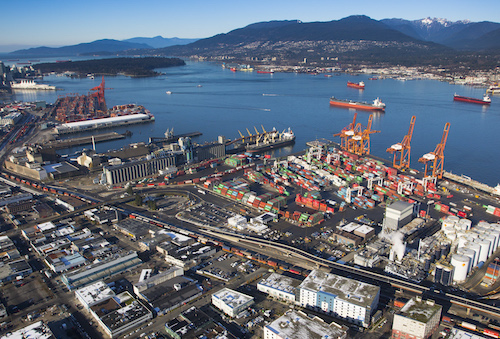Ongoing research in Stellwagen Bank National Marine Sanctuary is providing ever more compelling visualizations of shipping noise and the much quieter calls of whales in the area. Scientists from Woods Hole Oceanographic Institute, NMFS, and Cornell have deployed networks of sound recorders, which allow them to track individual whales and ships and see how their sounds interact. The Sanctuary, which contains the shipping lanes into Boston harbor, is one of the more urbanized ocean environments to be closely studied thus far. Here, we see four panels; the top left is wind noise, bottom left is right whales, and the right hand ones show that two ships completely drown out the whales as they pass through the area. “Every day, five to six large ships move into and out of Boston, and their acoustic footprint can last for hours.” says Cornell’s Chris Clark. “As a result, the Right whales trying to make a living off Boston are losing about 80 percent of their opportunities to keep in contact every day, day after day, month after month, year after year.”

From Sciencemag.com; click to read source article
“Right whales are long-lived animals. When they were kids and teenagers, their world was normal,” Clark says. “Acoustic habitat loss is a stressor and there are multiple stressors on a species.” His team has found that the whales often no longer bother answering calls from their peers. In this world of constant noise, they wouldn’t be heard anyway. “Their social network is constantly ripped apart,” says Clark. “In one area, noise levels are now 105 decibel where they should be 75.” Other researchers from the Right Whale Consortium found that the animals show dramatic loss in vital body fat: In some individuals, the blubber layer is thinner than normal, hinting at the possibility that they no longer find enough food due to the noise.
At conferences over the past year, project scientists have shared compelling animated sequences showing similar patterns; so far, only still images are available online. UPDATE! A recent article on this work in the journal Science (from which the Clark quotes above were drawn) has a link to a good video (note: the video has minimal interpretation. I find the upper left graph most compelling: it shows the whale call (in blue), loud near the whale and fainter as the cone spreads out; the red disc is the noise from the ship, gradually getting louder than the whale calls, until it drowns out the whale everywhere except very nearby). For more on this important research, see this recent article which contains two stills from a different animation, this section of the Stellwagen website on the passive acoustic monitoring program, this movie which visualizes the movements and sounds of two nearby and some more distant humpback whales, and hear this local radio piece on the Stellwagen research.


